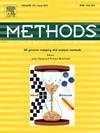EffiCOVID-net:一种用于胸部x线影像诊断COVID-19的高效卷积神经网络
IF 4.3
3区 生物学
Q1 BIOCHEMICAL RESEARCH METHODS
引用次数: 0
摘要
2019冠状病毒病(COVID-19)全球大流行严重影响了日常生活,迫切需要及早准确发现,以提供适当的医疗,特别是在有限的抗病毒药物选择下。事实证明,胸部x射线成像对于区分COVID-19与其他呼吸系统疾病至关重要,是一种重要的诊断工具。近年来,基于深度学习(DL)的模型在图像诊断中被证明是非常有效的。这些模型中的许多都是计算密集型的,容易过度拟合,特别是在有限的数据集上训练时。此外,传统模型往往不能捕获多尺度特征,降低了诊断的准确性。本文提出了一种高效的卷积神经网络(CNN),称为EffiCOVID-Net,它包含了多种特征学习单元。提出的模型由一堆EffiCOVID块组成,这些块包含几层卷积,其中包含(3×3)过滤器和循环连接,以提取复杂特征,同时保持空间完整性。使用两个公开的COVID-19胸部x射线数据集的标准性能指标,对EffiCOVID-Net的性能进行了严格评估。实验结果表明,efficovd - net优于现有模型,在多类别分类(COVID-19、正常、肺炎)中,在COVID-19 x射线数据集(D1)上的准确率为98.68%,在整理的胸部x射线数据集(D2)上的准确率为98.55%,在混合数据集(DMix)上的准确率为98.87%。对于二元分类(COVID-19 vs. Normal),该模型分别达到99.06%、99.78%和99.07%的准确率。通过突出显示影响模型预测的关键区域,集成基于grad - cam的可视化进一步增强了可解释性。EffiCOVID-Net的轻量级架构确保了较低的计算开销,使其适合在资源受限的临床环境中部署。与现有方法的对比分析表明,该方法具有较高的精度、效率和鲁棒性。然而,虽然该模型增强了诊断工作流,但它最好被用作辅助工具,而不是独立的诊断方法。本文章由计算机程序翻译,如有差异,请以英文原文为准。
EffiCOVID-net: A highly efficient convolutional neural network for COVID-19 diagnosis using chest X-ray imaging
The global COVID-19 pandemic has drastically affected daily life, emphasizing the urgent need for early and accurate detection to provide adequate medical treatment, especially with limited antiviral options. Chest X-ray imaging has proven crucial for distinguishing COVID-19 from other respiratory conditions, providing an essential diagnostic tool. Deep learning (DL)-based models have proven highly effective in image diagnostics in recent years. Many of these models are computationally intensive and prone to overfitting, especially when trained on limited datasets. Additionally, conventional models often fail to capture multi-scale features, reducing diagnostic accuracy. This paper proposed a highly efficient convolutional neural network (CNN) called EffiCOVID-Net, incorporating diverse feature learning units. The proposed model consists of a bunch of EffiCOVID blocks that incorporate several layers of convolution containing () filters and recurrent connections to extract complex features while preserving spatial integrity. The performance of EffiCOVID-Net is rigorously evaluated using standard performance metrics on two publicly available COVID-19 chest X-ray datasets. Experimental results demonstrate that EffiCOVID-Net outperforms existing models, achieving 98.68% accuracy on the COVID-19 radiography dataset (), 98.55% on the curated chest X-ray dataset (), and 98.87% on the mixed dataset () in multi-class classification (COVID-19 vs. Normal vs. Pneumonia). For binary classification (COVID-19 vs. Normal), the model attains 99.06%, 99.78%, and 99.07% accuracy, respectively. Integrating Grad-CAM-based visualizations further enhances interpretability by highlighting critical regions influencing model predictions. EffiCOVID-Net's lightweight architecture ensures low computational overhead, making it suitable for deployment in resource-constrained clinical settings. A comparative analysis with existing methods highlights its superior accuracy, efficiency, and robustness performance. However, while the model enhances diagnostic workflows, it is best utilized as an assistive tool rather than a standalone diagnostic method.
求助全文
通过发布文献求助,成功后即可免费获取论文全文。
去求助
来源期刊

Methods
生物-生化研究方法
CiteScore
9.80
自引率
2.10%
发文量
222
审稿时长
11.3 weeks
期刊介绍:
Methods focuses on rapidly developing techniques in the experimental biological and medical sciences.
Each topical issue, organized by a guest editor who is an expert in the area covered, consists solely of invited quality articles by specialist authors, many of them reviews. Issues are devoted to specific technical approaches with emphasis on clear detailed descriptions of protocols that allow them to be reproduced easily. The background information provided enables researchers to understand the principles underlying the methods; other helpful sections include comparisons of alternative methods giving the advantages and disadvantages of particular methods, guidance on avoiding potential pitfalls, and suggestions for troubleshooting.
 求助内容:
求助内容: 应助结果提醒方式:
应助结果提醒方式:


